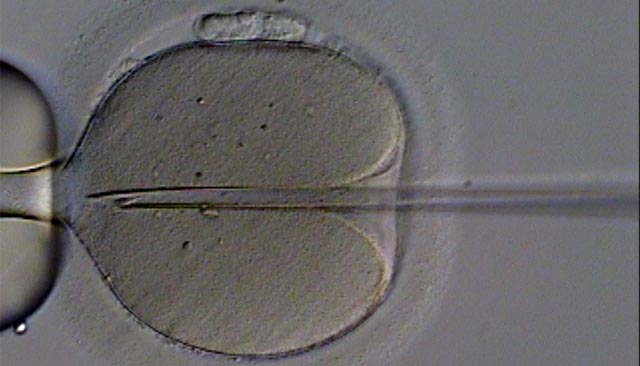But scientists have at least managed to turn natural mouse ES cells into a sperm cell that can fertilize an egg which then results in a living pup. And they have done similar things in mice to create precursor egg cells from natural ES cells. So it should only be a matter of time before they get these working with human ES cells too.
The next step would be to try to get these to work with iPS cells. Scientists have managed to make sperm and egg precursors from mouse iPS cells. But to my knowledge, no one has yet created a fertilized egg from a sperm and an egg derived from these cells.

This mouse named
Kaguya had two moms. |
While iPS cells appear to be very similar to natural ES cells, the proof will be in the cells that come from them. Someone needs to do the experiment where a mouse iPS cell is turned into a sperm or an egg that is then used to create a viable mouse pup. Then, as long as we can solve the problem that these cells sometimes turn cancerous, we’ll be in business for helping infertile couples this way. (As opposed to the approach suggested by a recent report where scientists found egg stem cells in adult women’s ovaries.)
So far this all seems doable. There aren’t any paradigm shifts or anything like that…mostly just technical hurdles to be overcome. The same may not be true for turning a man’s cells into eggs or a woman’s into sperm.
This is much harder for lots of different reasons. A big potential problem is that a man’s DNA is fundamentally different from a woman’s DNA. This is why, for example, we can’t just fuse two eggs and get a baby. Scientists pulled this off in mice but only by changing one egg’s DNA to make it more like a man’s. No way we could do something similar in people.
The hope would be that the iPS process would wipe the DNA clean of any gender. We don’t yet know if it does though. And if a bit of maleness remains in a man’s iPS cells or a bit of femaleness in a woman’s iPS cells, then we may not be able to get a working egg or sperm. We’ll just have to wait and see!
One thing we don’t have to worry about is some narcissist making an egg and a sperm from his cells to make a baby entirely out of his genes. Because of how DNA is distributed into eggs and sperm, you wouldn’t get a clone. Instead you’d get the most inbred individual you’ve ever seen. Odds are that the child would suffer from some devastating genetic disease that lay hidden in the parent’s DNA.
Nice primer on making iPS cells.


